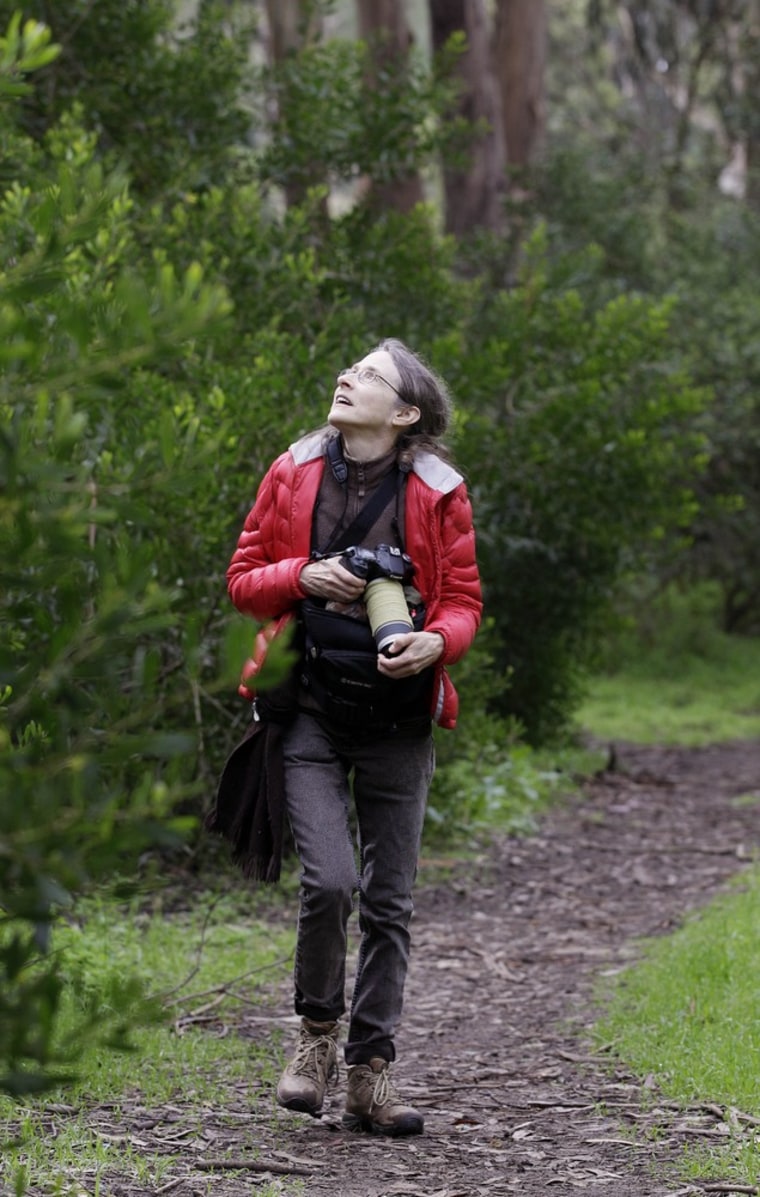Armed with a camera and a sturdy pair of boots, Janet Kessler spends most of her days roaming through lush parklands in pursuit of some of San Francisco's most unlikely inhabitants — the city's increasingly visible population of coyotes.
"They are my passion," said Kessler, a 35-year San Francisco resident who has been observing and photographing coyotes in four city parks. "It's this contradiction of an urban, settled environment and wild animals, and I find it thrilling."
Wildlife researchers estimate that about a dozen coyotes live in San Francisco, with the first sighting in decades reported in 2001 in the Presidio, a federal park and residential neighborhood located on the city's northern tip.
The coyotes' ability to adapt to life in the country's second-most densely populated major city has intrigued experts and provoked even far-fetched theories about how they came to set up residence in a city surrounded by water on three sides.
Although some view the coyotes as a hazard to pets and children, many residents have welcomed their presence, even when they stray boldly onto the streets.
"In recent years, we've had hawks, owls, coyotes return to this area, and it's good to see wildlife coming back," said John Wilk, who lives in the Diamond Heights neighborhood adjacent to Glen Canyon Park, one of the most well-known coyote habitats. Wilk said he's had four coyote sightings on local streets and in the parking lot of the Safeway supermarket near his home.
San Francisco filmmaker Melissa Peabody was inspired to make a documentary about the coyotes after reading about one that had taken up residence a block from her house, on Bernal Hill, a 24-acre patch of native grassland bounded by residential neighborhoods. Her 2008 film, "San Francisco--Still Wild at Heart," examines how coyotes impact urban ecosystems.
"This coyote had to find its way through a challenging and dense urban landscape to get to a beautiful but modest park, where it could take a breather," Peabody said. "It drew my respect, my sympathy and my curiosity."
Lt. Le-Ellis Brown, who keeps track of coyotes for the city's Animal Care and Control agency, says reports of attacks on humans are virtually nonexistent, though they have been known to chase unleashed dogs and prey upon the occasional cat. He said about half the calls the agency receives about coyotes are complaints related to the callers' pets, while the rest are reports of coyote sightings.
"I think a lot of people know it's kind of cool to see a coyote," Brown said.
But others who frequent the parks or live near coyote habitats say the animals are an unwelcome addition to the urban landscape.
Holly Davidson, a resident of the Presidio, said she frequently encounters coyotes in neighbors' yards when out walking with her yellow Labrador and 3-year-old son.
"These days we see them all the time. They are everywhere and have become an aggressive pest," she said.
"There are people whose attitude is, 'Get them out of here,'" said Sally Stephens, chair of San Francisco Dog Owners, a nonprofit with about 900 paying members. "I know people who have modified their use of the parks by coming at times of day when coyotes are less likely to be out and about."
But Stephens said she thinks most people — including most dog owners — are either unaware or accepting of the coyotes. The city has done a good job educating residents about the dangers of allowing dogs to roam off-leash in coyote habitats and the importance of maintaining a safe distance from the animals, she said.
A mated pair of coyotes living in Golden Gate Park were shot and killed by officials from the U.S. Department of Agriculture four years ago after they reportedly charged a pair of dogs. Animal control later said the coyotes appeared to have been regularly fed by humans, which is illegal in San Francisco.
Nine days after the shootings, a coyote pup was found dead nearby after apparently being hit by a car.
The urban coyotes' origins have been a source of considerable speculation. Some wonder whether they were planted by humans to help manage the city's populations of feral cats, gophers and other small animals. Others suggest they always have been there and have only become more visible as the city eliminates protective brush and plant life from the parks.
Initially, wildlife experts assumed the coyote spotted in 2001 traveled to the Presidio from the south — the only side of the city not bordered by water. But researchers from the University of California, Davis and the U.S. Geological Survey obtained a blood sample from the animal that revealed it came from a population based at least 12 miles north of the Golden Gate Bridge.
While it was conceivable that a human transported the animal to the city, the most likely explanation was that it crossed the bridge on its own, the researchers concluded.
However they got to San Francisco, the coyotes are now a fact of life and city residents must learn to coexist with the creatures, advocates say.
Kessler said she hopes her photographs, as well as a website and blog she has created, will expose people to the beauty and majesty of the animals and clear up misconceptions.
"Rumors are the thing that's going to hurt the coyotes the most," she said. "People have to learn that the coyotes are not going to hurt them. Slowly, hopefully, that kind of negative thinking will change."
